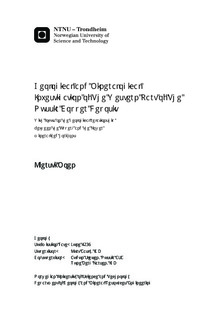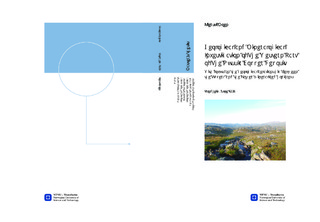| dc.description.abstract | In this study, two mineralized horizons in the Nussir copper deposit were compared. The horizons were found by diamond drilling conducted by Nussir ASA in the western part of Nussir West in Kvalsund Municipality, Finnmark County. The Nussir copper deposit is hosted by sedimentary and volcanic rock of Precambrian- Palaeoproterozoic age (2.5-1.6 Ga) that was deposited in an intracratonic half graben. It is classified as sediment-hosted stratabound copper deposit were bornite, chalcocite and chalcopyrite occurs as disseminated grains in a dolomitic rock with mineralization along veins.
Geological mapping, re-logging of diamond drill cores, thin section analysis, micro probe analysis of thin sections, statistical analysis of chemical data and a correlation of geophysical measurements in drill holes was performed.
Geological mapping indicated a conformation between the sedimentary Units in the Saltvatn Group. Drill core logging indicated a thicker and dolomite-rich Upper mineralized horizon and a more slate-rich dolomite in the Lower mineralized horizon. Because of the increasing contents of slate in the Lower mineralized horizon, it seem to pinch out towards west. The most western drill hole seemed to cut through the Upper mineralized horizon. This is in contradiction to the pre-classification of this horizon, which had classified it as being part of the Lower horizon. This observation comes from re-logging and study of polarized thin sections, which showed similarities with the Upper horizon. Microprobe analysis indicate a higher concentration of copper in bornite in the Upper mineralized horizon, and a higher concentration of silver in bornite and chalcocite in the Lower mineralized horizon. Multivariate analysis indicate great similarity between the Upper- and Lower mineralized horizon, and a lateral similarity along the mineralized horizon from east to west. Previous trace element analysis have been performed by use of different methods. In particular, one set of methods were utilized for the samples analysed in 2008 and before, and another set for the samples from 2008 and later. Geophysical measurements using induced polarization (IP) in the mineralized horizons indicated highest response from chalcocite, and natural gamma radiation indicated a higher content of feldspar in the Upper mineralized horizon.
Earlier studies have been speculated if the origin of the two mineralized horizons, whether it is (a) of sedimentary origin, or (b) caused by a tectonic repetition in form of duplex structures of one mineralized horizon. Previous studies have not been able to answer this, but stated that there is absence of geological structures that could support a theory of a tectonic repetition. The results from this work support a tectonic repetition of the occurrence of the two mineralized horizon with epigenetic mineralization, but the lack of observed duplex structures lead to the conclusion that there is need for further investigation to be able to uncover the real origin of Nussir copper deposition. | |

